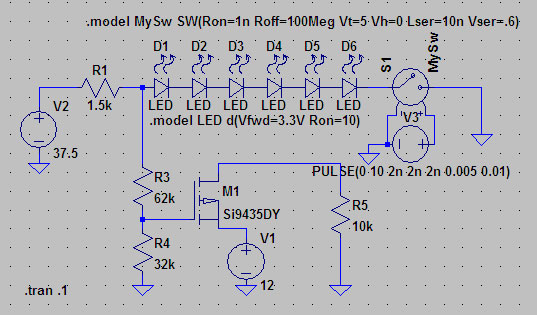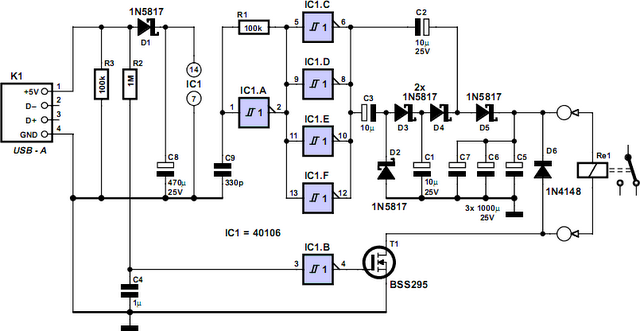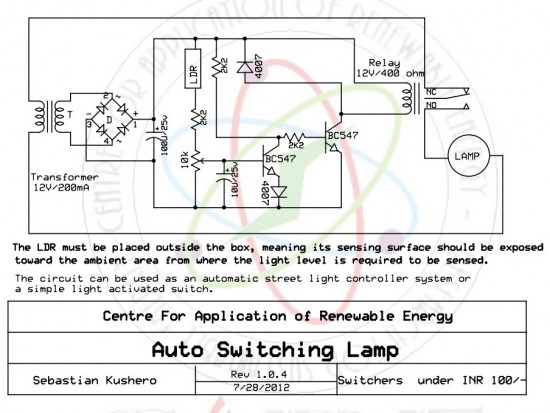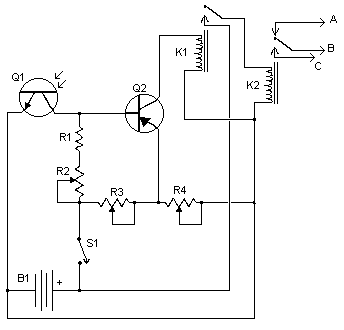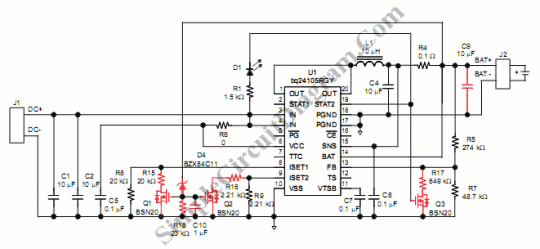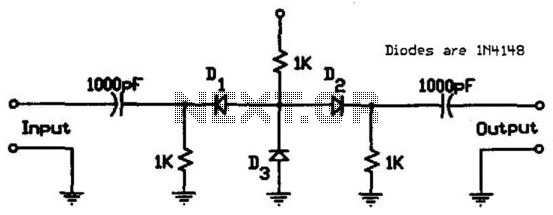
Schiepatti Switch
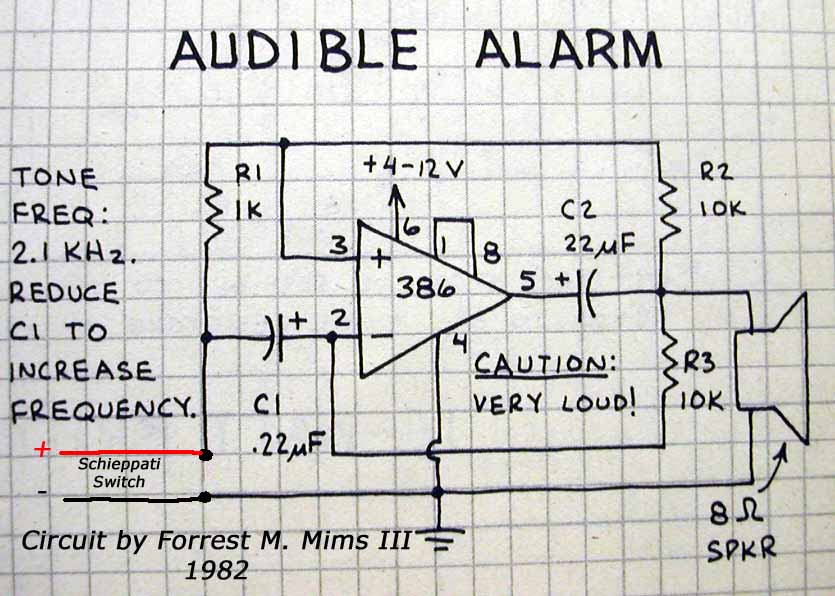
A highly versatile switch that can be controlled from any channel on a typical Futaba or JR radio setup. This switch was designed to trigger the shutter on digital cameras without the need for a servo attached to the camera. Beyond aerial photography, it can also trigger external loads that draw power from either the receiver battery or another external power source. Additionally, the switch can be programmed to trigger at preset intervals, such as every ten seconds. The output signal can be configured to activate on command from the transmitter and can be set to provide either a short pulse or a continuous ON signal. The switch consumes 0.8mA when the Light Emitting Diode (LED) is OFF and 6.5mA when the LED is ON, ensuring minimal risk of battery discharge. The switch is compact and lightweight, with a three-wire lead (black, red, and white) that connects to any spare channel on the receiver. It draws power from the receiver battery and receives command signals through the white wire.
A simple demonstration of controlling an external object using an external power source is provided. In one configuration, the Schieppati Switch is powered by the receiver battery and awaits commands from the transmitter via the receiver. When an ON command is transmitted, it is processed by the receiver and executed by the Schieppati Switch. The switch can manage loads up to 36 volts DC and 0.8 amps in its basic configuration, with the potential for higher loads as outlined in further details. For controlling inductive loads, such as a coil-operated switch, precautions must be taken to prevent back EMF, which can damage the switch. A diode should be installed in parallel with the inductive load, with the cathode connected to the positive power supply and the anode connected to the ground side of the coil. This configuration allows the recirculation of excess reverse current generated when the circuit is opened.
To enhance safety, the switch can be optically isolated using an optocoupler chip, such as the TIL 111 photo transistor. In this setup, the Schieppati Switch activates the photo transistor, allowing an isolated circuit on the other side of the chip to operate, eliminating any electrical connection between the switch and the external load. The configuration can be adapted to drive multiple glow plugs by connecting two devices in parallel, increasing the current draw. In scenarios where a model aircraft crashes in hard-to-reach areas, a simple noise-generating circuit can be constructed that operates off the receiver battery and can be activated by the Schieppati Switch. This can be achieved by using a "Y" harness connected to any unused channel, linking the noise generator to one branch and the Schieppati Switch to the other, ensuring that the power supply is drawn from the receiver.A very useful switch that can be controlled from any channel on the typical Futaba or JR radio set up. The switch was designed to trigger the shutter on digital cameras without the encumbrance of a servo glued onto the camera.
However, apart from aerial photography, one of the more interestingfeatures is that it can be used to trigger external loads that draw power either from the receiver battery or another external power source. Of further interest, the switch can be programmed to trigger at a preset interval of time, such as every ten seconds. Equally, the really interesting function is that the output signal can be set up to trigger at a preset interval of time and/or on command from the transmitter.
Finally, the output signal can be programmed to be either a short pulse or a continuous ON command. That is flexibility! The power consumption of the switch is 0. 8mA when the Light Emitting Diode (LED) is OFF and 6. 5mA when the LED is ON, so there is no risk of discharging the battery with the switch. Michele`s switch is about as small and as light as you can possibly imagine. In the image, the three wire lead (black, red and white) goes to any spare channel on the receiver. The switch draws power from the receiver battery and gets the command signal on the white wire. Shown below is a simple demonstration of controlling an EXTERNAL object using an EXTERNAL power source. The word EXTERNAL means that the object and the power source are not part of the receiver set up. In the left frame the Schieppati Switch is programmed, is receiving its power from the receiver battery and waiting for a command from the transmitter via the receiver.
In the right frame, an ON command has been transmitted, processed by the receiver and interpreted by the Schieppati Switch. The switch can handle up to 36 volts DC and 0. 8 amps when used in the simplest configuration as shown below. Higher loads can be controlled as described later. If you want to control something using a coil operated switch, such as one readily available at Radio Shack ®, then certain precautions must be taken.
A coil is an inductive load, and under certain conditions, back EMF can develop. Back EMF is "bad" and can blow the switch. To protect the switch, a diode must be used. Diodes let the current flow in only one direction, positive to negative and thus prevent the "bad stuff". It is better to install a diode in parallel to the inductive load (i. e. coil) with the cathode connected to power supply + and the anode on the other end of the coil switched to ground.
This will recirculate the extra reverse current generated by the coil when the circuit is opened. One really safe way to protect the switch, and everything dangling from it, is to isolate the switch optically using a small optocoupler chip such as a TIL 111 - photo transistor. The signal from the Schieppati Switch would simply turn on a photo transistor within the chip which then allows a totally isolated circuit on the other side of the chip to operate.
In essence, there is no electrical connection between the Schieppati Switch and the EXTERNAL load. The two devices are shown in parallel to increase the current draw required to drive two glow plugs. If only one plug is being driven, then eliminate one MOSFET and its attendant two resistors. When your favourite plane crashes into tall grass, thick forest or a field of corn, it would be nice to be able to detect some sound coming from the plane. A very simple circuit to generate noise can be constructed that is simple, inexpensive, runs off the receiver battery and can be commanded by the Schieppati Switch.
Simply use a "Y" harness plugged into any unused channel. Plug the noise generator into one branch (it will pick up only the red and black power source) and plug the Schieppati Switch into the other branch (it will take its power from the receiver 🔗 External reference
A simple demonstration of controlling an external object using an external power source is provided. In one configuration, the Schieppati Switch is powered by the receiver battery and awaits commands from the transmitter via the receiver. When an ON command is transmitted, it is processed by the receiver and executed by the Schieppati Switch. The switch can manage loads up to 36 volts DC and 0.8 amps in its basic configuration, with the potential for higher loads as outlined in further details. For controlling inductive loads, such as a coil-operated switch, precautions must be taken to prevent back EMF, which can damage the switch. A diode should be installed in parallel with the inductive load, with the cathode connected to the positive power supply and the anode connected to the ground side of the coil. This configuration allows the recirculation of excess reverse current generated when the circuit is opened.
To enhance safety, the switch can be optically isolated using an optocoupler chip, such as the TIL 111 photo transistor. In this setup, the Schieppati Switch activates the photo transistor, allowing an isolated circuit on the other side of the chip to operate, eliminating any electrical connection between the switch and the external load. The configuration can be adapted to drive multiple glow plugs by connecting two devices in parallel, increasing the current draw. In scenarios where a model aircraft crashes in hard-to-reach areas, a simple noise-generating circuit can be constructed that operates off the receiver battery and can be activated by the Schieppati Switch. This can be achieved by using a "Y" harness connected to any unused channel, linking the noise generator to one branch and the Schieppati Switch to the other, ensuring that the power supply is drawn from the receiver.A very useful switch that can be controlled from any channel on the typical Futaba or JR radio set up. The switch was designed to trigger the shutter on digital cameras without the encumbrance of a servo glued onto the camera.
However, apart from aerial photography, one of the more interestingfeatures is that it can be used to trigger external loads that draw power either from the receiver battery or another external power source. Of further interest, the switch can be programmed to trigger at a preset interval of time, such as every ten seconds. Equally, the really interesting function is that the output signal can be set up to trigger at a preset interval of time and/or on command from the transmitter.
Finally, the output signal can be programmed to be either a short pulse or a continuous ON command. That is flexibility! The power consumption of the switch is 0. 8mA when the Light Emitting Diode (LED) is OFF and 6. 5mA when the LED is ON, so there is no risk of discharging the battery with the switch. Michele`s switch is about as small and as light as you can possibly imagine. In the image, the three wire lead (black, red and white) goes to any spare channel on the receiver. The switch draws power from the receiver battery and gets the command signal on the white wire. Shown below is a simple demonstration of controlling an EXTERNAL object using an EXTERNAL power source. The word EXTERNAL means that the object and the power source are not part of the receiver set up. In the left frame the Schieppati Switch is programmed, is receiving its power from the receiver battery and waiting for a command from the transmitter via the receiver.
In the right frame, an ON command has been transmitted, processed by the receiver and interpreted by the Schieppati Switch. The switch can handle up to 36 volts DC and 0. 8 amps when used in the simplest configuration as shown below. Higher loads can be controlled as described later. If you want to control something using a coil operated switch, such as one readily available at Radio Shack ®, then certain precautions must be taken.
A coil is an inductive load, and under certain conditions, back EMF can develop. Back EMF is "bad" and can blow the switch. To protect the switch, a diode must be used. Diodes let the current flow in only one direction, positive to negative and thus prevent the "bad stuff". It is better to install a diode in parallel to the inductive load (i. e. coil) with the cathode connected to power supply + and the anode on the other end of the coil switched to ground.
This will recirculate the extra reverse current generated by the coil when the circuit is opened. One really safe way to protect the switch, and everything dangling from it, is to isolate the switch optically using a small optocoupler chip such as a TIL 111 - photo transistor. The signal from the Schieppati Switch would simply turn on a photo transistor within the chip which then allows a totally isolated circuit on the other side of the chip to operate.
In essence, there is no electrical connection between the Schieppati Switch and the EXTERNAL load. The two devices are shown in parallel to increase the current draw required to drive two glow plugs. If only one plug is being driven, then eliminate one MOSFET and its attendant two resistors. When your favourite plane crashes into tall grass, thick forest or a field of corn, it would be nice to be able to detect some sound coming from the plane. A very simple circuit to generate noise can be constructed that is simple, inexpensive, runs off the receiver battery and can be commanded by the Schieppati Switch.
Simply use a "Y" harness plugged into any unused channel. Plug the noise generator into one branch (it will pick up only the red and black power source) and plug the Schieppati Switch into the other branch (it will take its power from the receiver 🔗 External reference
